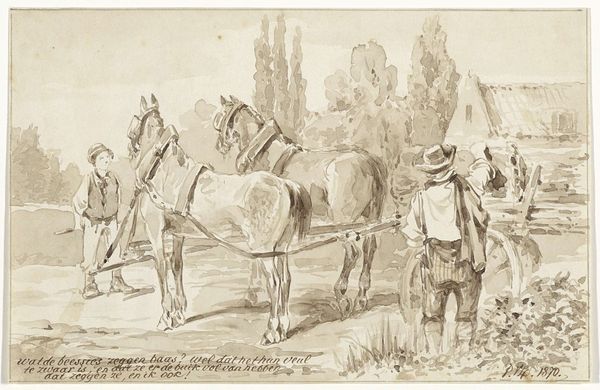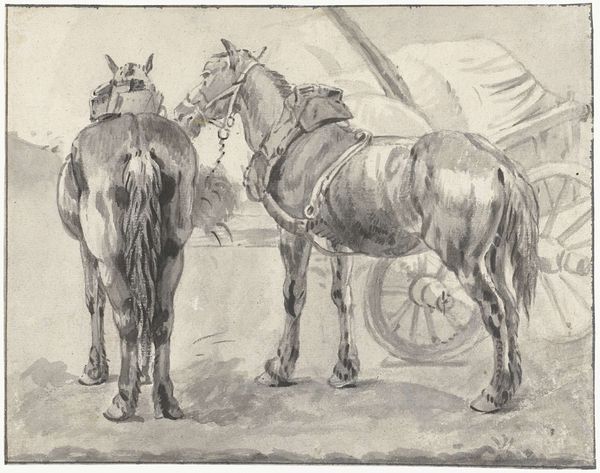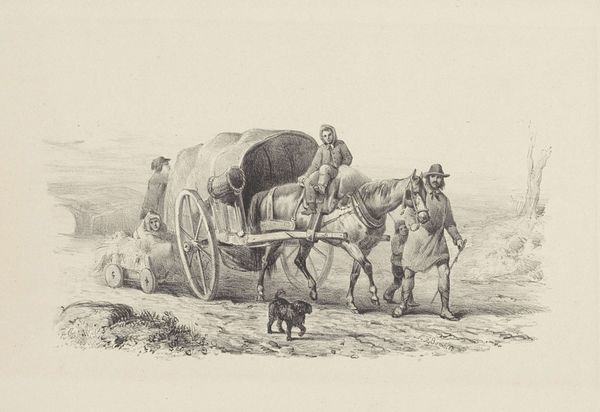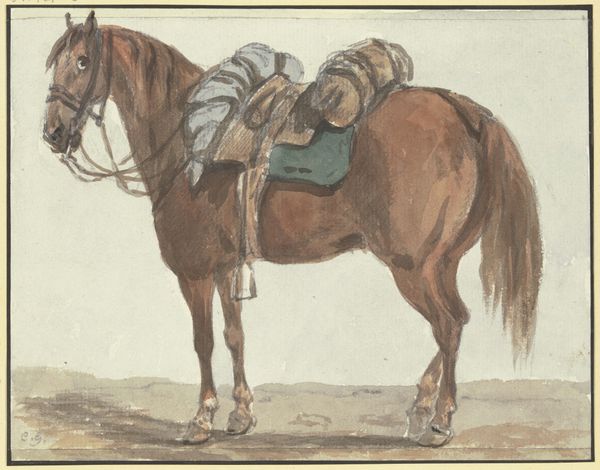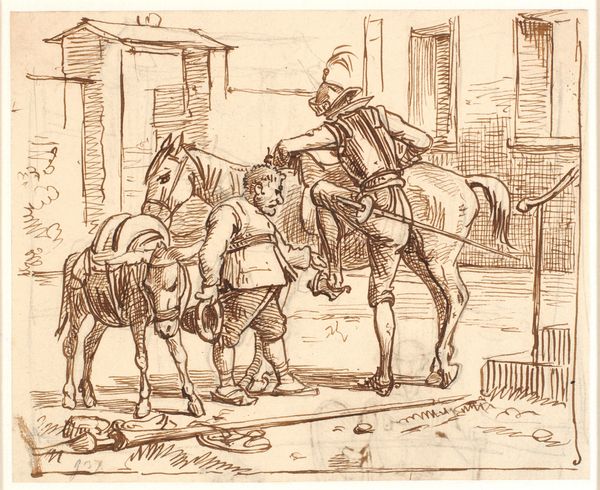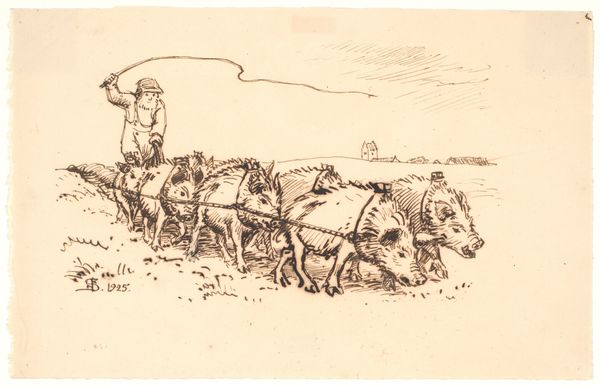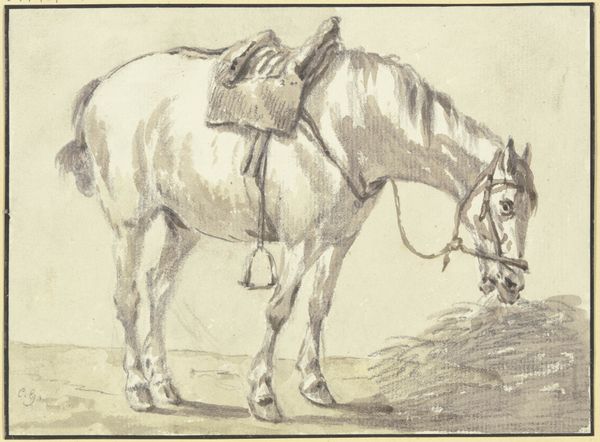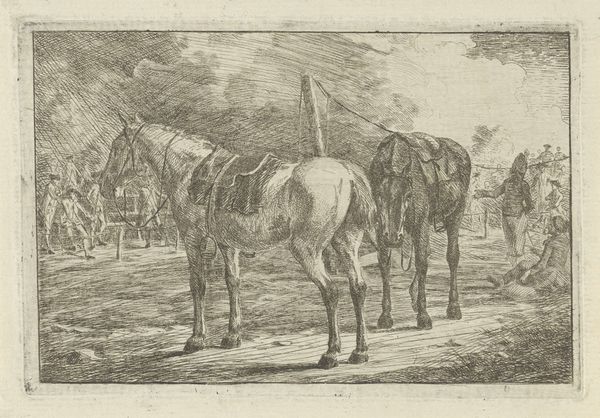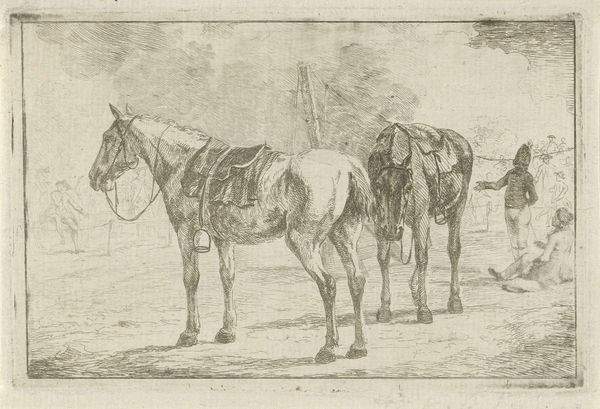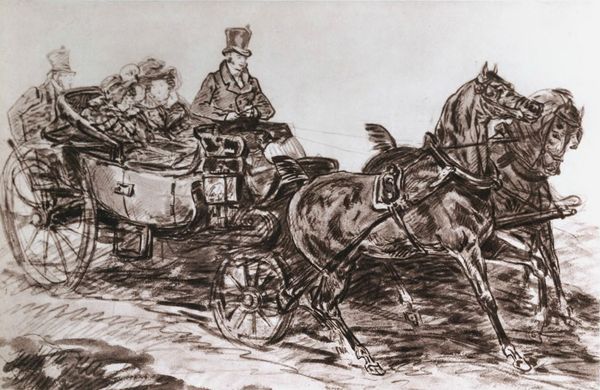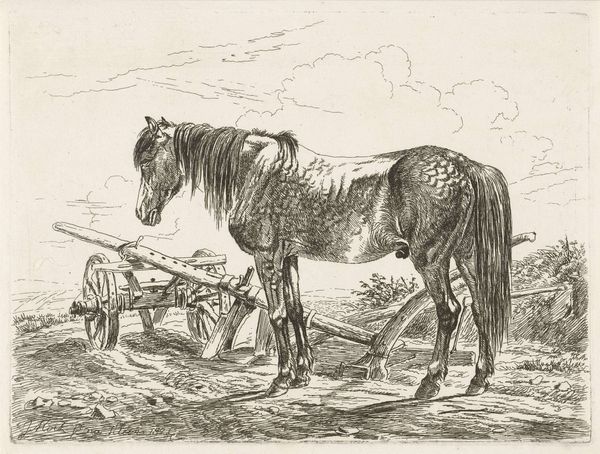
drawing, pencil
#
drawing
#
baroque
#
pencil sketch
#
landscape
#
pencil
#
horse
#
pencil work
#
realism
Dimensions: height 152 mm, width 189 mm
Copyright: Rijks Museum: Open Domain
Editor: Here we have Pieter van Bloemen's "Twee rustende lastpaarden," created between 1667 and 1720. It's a delicate pencil drawing. I’m struck by the quiet weariness it conveys. What do you see in this piece, especially considering its historical context? Curator: It's tempting to see simple pastoral imagery, isn’t it? But let’s dig deeper. These aren't just resting animals. They're "lastpaarden" – beasts of burden. Think about 17th- and 18th-century trade and colonization. These horses are part of that machinery, integral to the movement of goods and, unfortunately, often enslaved people. How does that understanding shift your perception? Editor: Wow, I hadn’t considered that connection to colonialism. So, this seemingly tranquil scene is actually implicated in broader systems of power and exploitation? Curator: Exactly. And consider the artist: van Bloemen was known for his Italianate landscapes. How does idealizing the Italian countryside serve to mask some of the brutal realities of the period? This drawing provides an important glimpse into animal labour, reminding us of the roles that non-human beings have played in the history of labour and power. The “resting” itself could be interpreted as a rare reprieve within relentless exploitation. Editor: It completely reframes how I see it. It's not just a pretty drawing of horses; it's a reminder of the cost of progress. I guess even seemingly straightforward images can be politically loaded. Curator: Precisely. And that's the power of art: to provoke these critical reflections, urging us to confront uncomfortable truths about our history and its ongoing consequences. I will never look at horses the same way again. Editor: Me neither. Thank you, that’s really changed how I understand this work.
Comments
No comments
Be the first to comment and join the conversation on the ultimate creative platform.

